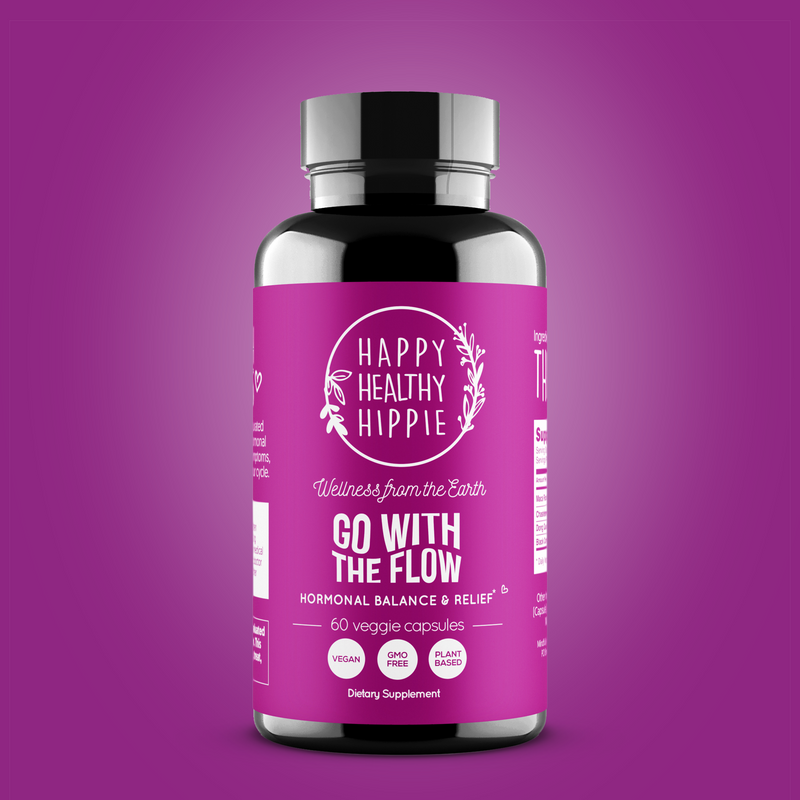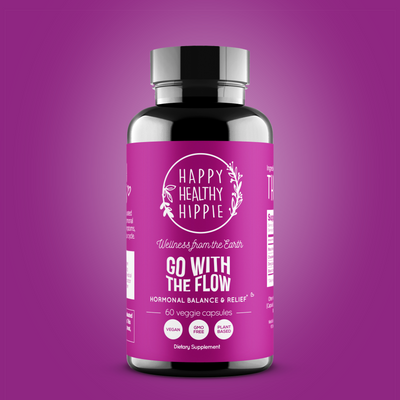
Eating for weight loss, eating to boost those gains, eating to fuel yourself and keep the hanger at bay.
These are all great, but did you know that you can eat to balance your hormones?
Not many people immediately think about hormonal health when it comes to nutritional value. These days, it’s all about bulking up, caloric deficits, and intermittent fasting. Keto, paleo, veganism, and Whole30 dominate the diet scene.
All of these paths to healthy eating are valid, and if they work for you, all the better. However, if you’re struggling to get your hormones back into check, you should drop the diets and restrictions.
Instead, focus on getting your body back up to an optimal state using just the foods you consume.
In this article, we’ll look at 11 foods that make up a smart hormone balance diet.
Hormone Balance 101
Think of your hormones like your body’s messengers. They’re specifically designed to green-light certain organs, which then get the message to run important processes.
This includes simple, daily functions like regulating your sleep, energy levels, libido and reproduction, metabolism, stress response, and more.
Hormones are part of the body’s overall endocrine system, but they’re produced in various sites across the body.
For example, cortisol is produced in the adrenal glands and then released into the bloodstream. Estrogen is another hormone, produced primarily by the ovaries in premenopausal women.
In a healthy body, where everything is functioning as it should, hormone levels naturally fluctuate in response to the body’s needs. For example, during sleep, your cortisol levels are at their lowest because cortisol is the “stress” hormone.
Since humans are mostly diurnal creatures, we need to feel awake during the day, which is when our cortisol levels spike, peak, and then gradually drop throughout the day.
The same is true for estrogen levels. In healthy, fertile women, estrogen ebbs and flows, in conjunction with progesterone, to trigger and regulate the menstrual cycle. This happens every month.
However, there is also a larger “cycle” that dominates a woman’s estrogen levels, and that is the transition into menopause.
At this point, even though the ovaries stop being the primary site for estrogen production, it can be produced by non-reproductive tissue like the liver, the heart, muscle, bone, and brain. Obviously, the levels of estrogen will be lower during this time.
So fluctuations in hormone levels are both natural and necessary. The “problem” of hormonal imbalance occurs when you have too much or too little of a certain hormone. The accumulation of too much cortisol, for example, can cause muscle weakness, hair loss, rapid weight gain, high blood pressure, bruising, and more.
High estrogen levels can occur both in women and men. Head on over to our dedicated informative guides to high estrogen levels in women and high estrogen levels in men to learn more!
How Can I Know If My Hormones Aren’t Balanced?
Why do hormones sometimes fall out of balance? Great question.
Knowing the answer to this will help you determine what changes you need to make in your life to help rebalance your hormone levels.
It will also allow you to appreciate how even tiny changes within your body can make all the difference to your overall health and well-being.
So, hormones fall out of balance for a number of reasons. These can include:
- Poor (or disturbed) sleep
- Stress
- Eating disorders
- Adverse effects of some medications
- Hormone therapy (or hormone drugs like birth control)
- Tumors on the glands or sites that produce certain hormones
- Injury or trauma
- Exposure to toxic chemicals (pesticides, pollution, etc.)
- Hereditary or genetic issues
- Development of certain conditions like Type 1 or 2 diabetes, hyper- and hypothyroidism, etc.
Now, to truly get to the heart of the issue, you have to consult a healthcare professional. This can be your primary care physician, to start, but could also involve specialists in functional medicine such as naturopaths or endocrinologists.
These licensed and experienced medical professionals will run a series of diagnostic tests, including saliva, bloodwork, urine, and more, to rule out other issues and find the cause of your hormone imbalance.
Hormone Balance Diet
Once you pinpoint which hormones are out of balance, it’s all an upward journey toward rebalancing from there. The good news is that there are multiple ways you can address these issues — and they’re all natural!
The most accessible and impactful way to transform your health is to implement a hormone balance diet. Diet therapy for hormones is a proven and effective way to sustainably improve your hormone levels and adjust any other issues that may be affecting your body.
According to ongoing research conducted by The Institute for Functional Medicine, the link between nutrition and hormone levels is fundamental.
What you eat can deeply affect how your hormones influence, interact with, and signal cells and organs in your body.
Too much processed food with artificial sugars, for example, interferes with how your body responds to insulin. This interference can then trigger issues like PCOS, weight gain, and even diabetes.
The relationship between hormone balance and diet means that making new and beneficial food choices is a form of therapy that restores the hormonal balance in your body.
11+ Foods for Hormone Balance
Get out a pen and paper because you’re going to want to note these 11 foods that are vital to a hormone balance diet.
#1. Organic Tempeh

Tempeh is a traditional Japanese soy-based product that’s made from fermented soybeans. Because of its firm texture, its ability to easily take on additional flavoring, and high nutritional value, tempeh has become the go-to protein substitute of choice.
However, did you also know that tempeh, like miso, has phytoestrogenic properties, which can reduce the risk of breast cancer and rebalance the estrogen levels in the body?
Furthermore, going for fermented options of soy, such as tempeh or miso, will help boost your daily probiotic intake, which aids digestion. Just make sure to skip non-organic soy due to the negative effect of genetic modification on soybeans.
#2. Wild-Caught Salmon

Yes, your hormone balance diet can include everyday staples like salmon!
Just take note of the emphasis on wild-caught salmon. It’s best if you can opt for wild-caught salmon over farmed salmon as the latter may be higher in calories but comparatively lower in crucial minerals like potassium, zinc, and iron.
However, salmon, in general, is a fantastic source of vitamin D, which aids in the rebalancing of our sex hormones, boosting testosterone, and regulating estrogen in the body.
Besides this, salmon, and even sources like albacore tuna, are high in omega-3 fatty acids. These good fats do the body a world of good, including improving memory and cognition, boosting our mood, and reducing the risk of breast and prostate cancers.
#3. Seaweed

Nutritional seaweed is what we call a triple-threat (in a good way!).
Sources like nori, wakame, dulse, kelp, arame, and kombu:
- Modify estrogen and metabolism in postmenopausal women (which also lowers the risk of estrogen-dependent diseases like breast cancer)
- Contain an amino acid called tyrosine, and the mineral iodine, both of which are crucial to keeping the thyroid gland functioning properly
- Are rich in antioxidants and collagen, which protect your skin and provide hydration, plumpness, and elasticity even as you age
#4. Bell Peppers

Slice ‘em, saute ‘em, and serve up in a stir-fry! Bell peppers are those colorful, flavorful additions to any meal. However, as part of a hormone balance diet, bell peppers can do a lot for your body.
First up, bell peppers are loaded with vitamin C, which is essential for your adrenal glands to function properly. When we’re stressed, our bodies rely on our storehouse of vitamin C, and it also boosts our immune system.
Secondly, one medium-sized red bell pepper also includes B vitamins which additionally regulate our energy levels and keep our metabolism running well.
#5. Avocados

When it first hit the “health scene,” avocados were known as superfoods. Indeed, this incredible berry (yes, avocados are botanically considered to be a large berry!) forms a crucial part of a hormone balance diet.
Besides being a source of healthy fats, which protect our heart and give us energy, avocados can help keep our blood sugar levels even. If you’re currently in the process of cutting out sugary snacks and food, avocados can be a lifesaver and body-healer.
Well-balanced blood sugar levels support everything from a healthier metabolism, better sleep, a well-functioning gut and digestive system, and a more agile nervous system.
Avocados also form a crucial part of the adrenal fatigue diet because consuming them stops sugar from disrupting our adrenal glands. This, in turn, keeps cortisol levels in check.
Finally, avocados contain vitamin B5, which is a specifically stress-fighting vitamin. Superfood indeed!
#6. Cruciferous Veggies

Cauliflower and broccoli are both parts of the cruciferous veggie family. Some other popular choices include cabbage, Brussels sprouts, and bok choy.
Crucifers are veggies that are rich in isothiocyanates and indole-3-carbinol, also known as “IC3.” These nutrients help prevent estrogen-related cancers by regulating estrogen levels in the body.
They also play a significant role in helping our livers to metabolize estrogen in a more healthy and efficient way, reducing the risk of estrogen overaccumulation.
Go With The Flow is a 100% plant-based supplement that supports you by:
- Menopause and PMS relief through herbal remedies
- Balancing hormone levels
- Providing mental & emotional relief
- Reducing bothersome physical symptoms (acne, bloating, etc.)
Try it risk free with our 60-Day Money Back Guarantee.
#7. Prebiotics and Probiotics

Probiotics are good gut bacteria and prebiotics, found in fibrous foods like kale, rapini, and spinach, nourish those bacteria so they can help your digestive system.
The gut is actually one of the largest sites of hormone production and synthesis in the human body. Right now, scientists can track 20 hormones related to hunger, appetite, satiety, and metabolism that come from the gut alone.
So, it’s in your best interests to keep your gut happy. And you can do this with probiotics.
It’s not just yogurt that’s a good source of probiotics — any foods that have been allowed to ferment, such as kimchi, sauerkraut, pickles, and the aforementioned tempeh and miso, are good inclusions for your hormone balance diet.
#8. “Good” Carbs

In the ‘80s and ‘90s, carbs were the enemy. Fast forward about three decades of nutritional research later, and we know the real deal.
There are “bad” carbs, and there are “good” carbs. Cut out the former, enjoy the latter, and keep your body moving. It’s really that simple.
So what do “good” carbs entail and how can they help your hormone balance diet?
You want to find whole grains and carb sources that are loaded with minerals, protein, and fiber. These include:
- Potatoes — Even though they’re starchy, potatoes are one of the foods that can help regulate melatonin and cortisol levels. Your body needs carbs to keep glucose levels steady.
- Millet — This is a gluten-free whole grain that equips your body with a wide range of B vitamins. This helps to support our nerves and brains when we experience stress. Millet also contains magnesium and fiber, which are essential for balanced insulin levels.
- Quinoa — The evergreen superfood quinoa has plenty of minerals, protein, and fiber. It specifically helps with digestion, thanks to its fiber content, and assists with thyroid hormone production.
- Brown Rice — Not only does brown rice contain phytoestrogens, which help balance estrogen levels, these healthy grains are also rich in B vitamins. This family of vitamins helps the liver metabolize hormones, which stops the accumulation of estrogen. This ultimately maintains the delicate balance between estrogen and progesterone, which can stop a whole range of related issues like PCOS or cancerous tumor growth.
#9. Lentils

Green, red, and yellow lentils, along with kidney beans, chickpeas, navy beans, and more, are a great source of protein. However, for a hormone balance diet, incorporating lentils more frequently helps to reduce estrogen levels and maintain optimal levels of essential minerals and vitamins.
#10. Brazil Nuts

Nuts and seeds, in general, are a fantastic food group for your body as you can count on a healthy source of fats and proteins. But we wanted to single out brazil nuts for your hormone balance diet because it’s jam-packed with selenium.
Selenium is a vital antioxidant that protects the thyroid gland, helping the body to convert its resources into T3, the active thyroid hormone. All you need is two or three of these nuts a day to keep your thyroid at bay!
#11. Helpful Herbs and Spices

Herbs like mint and spices like ginger or turmeric might be ingredients that you’re used to cooking with. But using herbs and spices as more than simple flavoring can greatly enhance your body’s ability to balance out hormones.
Some beneficial herbs and spices to include in your hormone balance diet include:
- Turmeric — Turmeric’s active ingredient, curcumin is the main regulator of hormone balance. Not only is it an anti-inflammatory agent, curcumin can also help you get an irregular cycle back on track, prevent PCOS and endometriosis, and even extend the life of viable eggs in the ovary. If you’re not flavoring food with turmeric, you can mix it in a golden milk latte or take a supplement pill to balance hormones.
- Garlic — Like organic tempeh and brown rice, garlic boasts plenty of phytoestrogens, which naturally balance out estrogen in the body.
- Cinnamon — Cinnamon is also a useful antioxidant like turmeric. And, just like turmeric, it can help boost your immune system and repair body tissue. However, when acting upon hormones, cinnamon has the most impact on insulin, which can help you balance blood sugar levels and make your metabolism more efficient.
You can use herbs in your tea for hormone balance or you can add them to salads, soups, and even warm drinks.
Other Ways to Fix Hormone Imbalance
Fixing a hormone imbalance with diet is just one way to address your internal issues. If you want to go even faster, with better overall results, we recommend incorporating these three additional strategies.
#1. Take Supplements
We’ve already covered herbs and spices as a crucial part of a well-rounded hormone balance diet. However, you’re not limited to garlic, cinnamon, and turmeric.
There are plenty of natural herbal supplements such as black cohosh root, dandelion, maca, ginger, lemon balm, and chamomile that you can use to soothe PMS symptoms, heal PCOS, boost immunity, bring back your libido, and eliminate those pesky menopausal symptoms.
If you want a more holistic approach to addressing hormone health, you can also opt for Happy Healthy Hippie’s Go With the Flow supplement. The formula includes a collection of curated hormone balance herbs specifically for female reproductive, menstrual, and hormonal health.
#2. Exercise Routinely
Exercise does more than just make you fit — it helps you feel good. Especially when it comes to maintaining hormonal health, exercise is crucial.
Studies show that consistent physical activity that gets your heart rate going can significantly decrease the risk of breast cancer, balance your blood sugar levels, reduce the intensity and duration of menopause symptoms, and improve your stress response.
#3. Manage Your Stress & Sleep More
And, finally, you’ll need to address your stress response. The best way to do that is to sleep more, and experience better, deeper sleep.
When you get enough sleep, you’re ready to conquer the next day and respond adequately to the stresses that get thrown your way. Your cortisol levels naturally rise, peak, and fall in alignment with your waking day.
In contrast, poor sleep — either sleep that’s interrupted or trouble falling asleep — can fry your body’s stress response, releasing too much cortisol, too many times, and keeping you trapped in the cycle of sleepless nights.
Sleep and stress are intrinsically connected. To get your body back on track in a natural way, we recommend using Namastay in Bed. It includes premium and pure herbs such as chamomile, valerian root, and melatonin, which work alongside your body’s hormones to get back to optimal sleep levels.
Did you know that you can try using essential oils to balance your hormones? Check out our article to learn more!
Conclusion
Your body’s hormones want to work for you, not against you. However, they need help and the best strategies to use are natural ones that boost your body’s function, instead of hijacking it.
And it’s not just your endocrine system that may need help. Opting to eat a hormone balance diet can bring multiple body systems back “online,” helping them to operate well. Here’s to living your best life!
Related Articles
- 9 Adaptogenic Herbs to Balance Your Hormones
- The Pros and Cons of Hormone Pellet Therapy
- 15+ Tasty Foods That Boost Estrogen [Updated for 2021]
- 4 Estrogen Dominance Symptoms [Spot & Fix Them]


